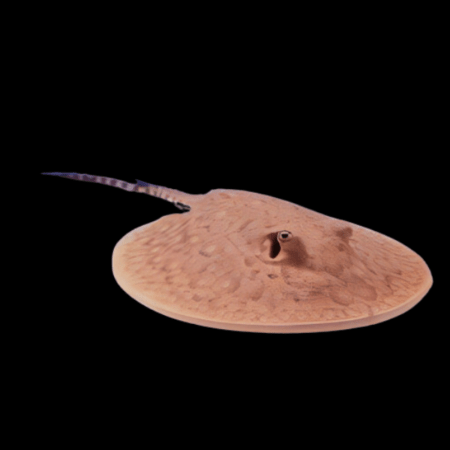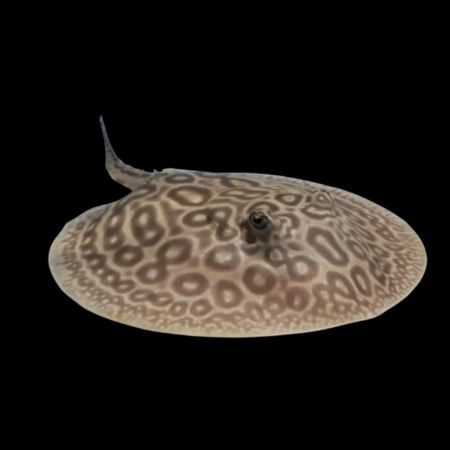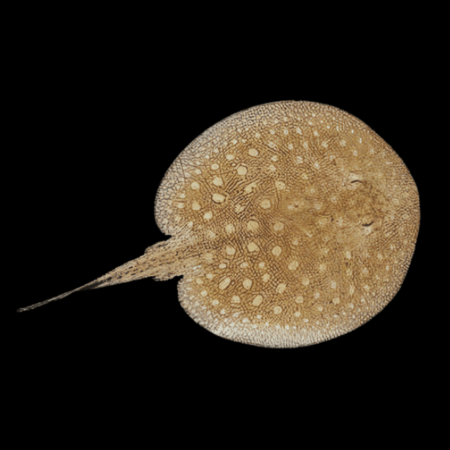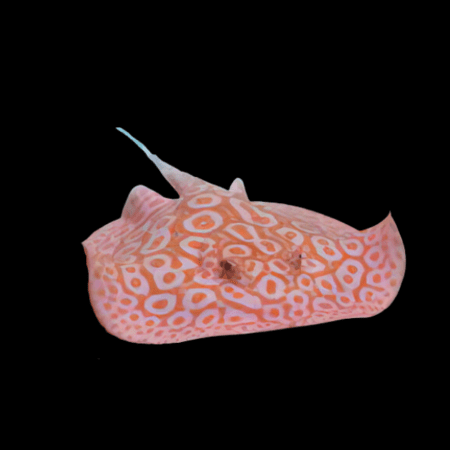Description
Freshwater High Grade Albino Black Diamond Polka Dot Stingray Potamotrygon Leopoldi
Overview
The Black Diamond Polka Dot Stingray, a mesmerizing jewel of the freshwater aquarium world, enchants enthusiasts with its stunning black velvety body and vibrant white spots. Its elegant disc-shaped body and trailing tail make it a captivating centerpiece for any large aquarium. This species is renowned for its unique patterning, making each individual a one-of-a-kind addition to your aquatic collection.
Origin
Native to the rivers and tributaries of the Amazon Basin in South America, the Black Diamond Polka Dot Stingray thrives in environments with sandy bottoms and plenty of hiding spots. Their natural habitat is key to understanding their care and requirements in captivity.
Feeding
These carnivorous bottom-dwellers have a hearty appetite and prefer a varied diet. Offer them a mix of meaty foods such as shrimp, squid, mussels, and specially formulated pellets or sticks designed for carnivorous freshwater rays. Frequent feedings are necessary for their well-being, with juveniles requiring more frequent meals than adults.
Tank Mates
When choosing tank mates, select peaceful, large fish that occupy the upper levels of the tank to avoid competition and potential harm to the stingray. Avoid small fish that might be mistaken for prey. Ideal companions may include larger characins, peaceful cichlids, and catfish that share similar water requirements.
Aggression
Black Diamond Stingrays are generally peaceful towards other large fish but can be territorial with their own kind or similar bottom-dwellers. It’s crucial to monitor interactions and provide ample space for each individual to establish its territory.
Experience Level
Due to their specific care requirements and sensitivity to water quality, these stingrays are best suited for advanced aquarists. Proper knowledge and experience in maintaining large, species-specific setups are essential for their health and longevity.
Water Parameters
Maintaining pristine water conditions is critical. Aim for a temperature range of 76-82°F (24-28°C), pH levels between 6.0 and 7.5, and low nitrate levels. Regular water changes, efficient filtration, and a spacious tank (minimum 180 gallons for a single specimen) with a sandy bottom are necessary to mimic their natural environment and ensure their wellbeing.




